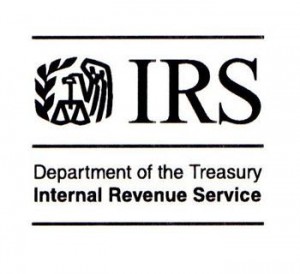 What should a retirement plan sponsor do if it discovers that it has overpaid benefits to a retiree or other former employee? The question has recently arisen in the case of the pension plan of Pontiac, Michigan, which accidentally overpaid many of its retirees an average of $1,000 over a 16-month period. Read more.
What should a retirement plan sponsor do if it discovers that it has overpaid benefits to a retiree or other former employee? The question has recently arisen in the case of the pension plan of Pontiac, Michigan, which accidentally overpaid many of its retirees an average of $1,000 over a 16-month period. Read more.
Tag Archives: retirement
IRS Clarifies That Plans Do Not Necessarily Have to Recoup Overpayments
Defined Benefit Versus Defined Contribution: Lessons from Utah
(Posted on April 26, 2015 by Carol V. Calhoun)
 The Pension Research Council of The Wharton School of the University of Pennsylvania has done a study on the effects of Utah’s change in its pension system. Before the change, employees participated in a defined benefit plan. Employees hired after the change were given a choice between a hybrid (defined benefit/defined contribution) plan or a straight defined contribution plan. Those who failed to make a choice were automatically assigned to the hybrid plan. In general, either of the new plans was less generous than the old defined benefit plan.
The Pension Research Council of The Wharton School of the University of Pennsylvania has done a study on the effects of Utah’s change in its pension system. Before the change, employees participated in a defined benefit plan. Employees hired after the change were given a choice between a hybrid (defined benefit/defined contribution) plan or a straight defined contribution plan. Those who failed to make a choice were automatically assigned to the hybrid plan. In general, either of the new plans was less generous than the old defined benefit plan.
In general, the Pension Research Council found that employees hired after the change had greater turnover than those hired before the change. Moreover, those electing into the hybrid plan were more likely to stay with the employer than those electing into the defined contribution plan. Those who defaulted into the hybrid plan had the highest turnover.
The Pension Research Council concluded that while the change may have saved the state money in pension costs, “public pension reformers must consider employee responses, in addition to potential cost savings, when developing and enacting major pension plan changes.”
Employee Benefits Effects of Treasury, IRS and Department of Labor Announcements That All Legal Same-Sex Marriages Will Be Recognized For Federal Tax Purposes
(Posted on February 23, 2015 by Carol V. Calhoun)
 This post was updated on June 26, 2015 to reflect the Supreme Court’s decision in Obergefell v. Hodges, which struck down all state bans on same-sex marriage.
This post was updated on June 26, 2015 to reflect the Supreme Court’s decision in Obergefell v. Hodges, which struck down all state bans on same-sex marriage.
The Treasury Department and the IRS announced on August 29, 2013 that all legal same-sex marriages will be recognized for federal tax purposes. On September 18, 2013, the Department of Labor took the same position for purposes of the Employee Retirement Income Security Act of 1974 (“ERISA“). The announcements and corresponding revenue ruling
Because employee benefit plans are extensively regulated by federal law, this announcement means that all employers will be required to recognize such marriages for many employee benefits purposes. Conversely, employers in states that treat civil unions or domestic partnerships as if they were marriages will nevertheless be forbidden from treating such arrangements as marriages for certain employee benefits purposes. However, the precise impact will depend on whether the plan is subject to ERISA or whether it is a governmental or church plan exempt from ERISA. The chart below sets forth areas in which the announcement will affect the operation of different types of plans.
IRS opens determination letter process for governmental plans
(Posted on February 1, 2015 by Carol V. Calhoun)
 In recent years, the Internal Revenue Service (“IRS”) has been allowing plan sponsors to request determination letters on the qualified status of their retirement plans only during certain periods (cycles). For individually designed governmental plans, such a cycle (Cycle E) opened on February 1, 2015, and will remain open until January 31, 2016. Read more
In recent years, the Internal Revenue Service (“IRS”) has been allowing plan sponsors to request determination letters on the qualified status of their retirement plans only during certain periods (cycles). For individually designed governmental plans, such a cycle (Cycle E) opened on February 1, 2015, and will remain open until January 31, 2016. Read more
IRS Updates Guidance on Governmental Plan Determination Letters
(Posted on October 9, 2014 by Carol V. Calhoun)
 As of October 9, 2014, the Internal Revenue Service has updated its page on determination letters for governmental plans. The page contains information for any governmental plan considering obtaining an IRS determination letter, including the following: Read more
As of October 9, 2014, the Internal Revenue Service has updated its page on determination letters for governmental plans. The page contains information for any governmental plan considering obtaining an IRS determination letter, including the following: Read more
Judge in Detroit Bankruptcy Case Denies Any Special Protections for Pensions
(Posted on December 5, 2013 by Carol V. Calhoun)
 Judge Steven W. Rhodes of the U.S. Bankruptcy Court for the Eastern District of Michigan had now issued an opinion stating that the bankruptcy proceedings for the City of Detroit can go forward. The opinion provided no special protections for as yet unfunded pension benefits (although benefits already in the pension funds were protected). The judge rejected a contention that Michigan constitutional provisions prohibiting impairment of pensions would provide protection to promised but unfunded benefits.
Judge Steven W. Rhodes of the U.S. Bankruptcy Court for the Eastern District of Michigan had now issued an opinion stating that the bankruptcy proceedings for the City of Detroit can go forward. The opinion provided no special protections for as yet unfunded pension benefits (although benefits already in the pension funds were protected). The judge rejected a contention that Michigan constitutional provisions prohibiting impairment of pensions would provide protection to promised but unfunded benefits.
“The accrued financial benefits of each pension plan and retirement system of the state and its political subdivisions shall be a contractual obligation thereof which shall not be diminished or impaired thereby.” [Article IX, Section 24, Michigan Constitution]
California Public Pension Ballot Initiative Would Eliminate Vested Right to Future Benefit Accruals
(Posted on October 16, 2013 by Carol V. Calhoun)
 A California statewide ballot initiative proposal, The Pension Reform Act of 2014 was filed on October 15, 2013. The proposal if passed would amend the California constitution to provide that employees have no vested rights in future pension and retiree health benefit accruals, but only to benefits accrued based on past employment. As such, it would cause the vesting of public retirement plans in California to be more comparable to the vesting of private retirement plans under the Employee Retirement Income Security Act of 1974 (“ERISA”). The proposal, if adopted, would be particularly significant inasmuch as California has historically been a leader in the recognition of the right of public employees to vesting in future benefit accruals.
A California statewide ballot initiative proposal, The Pension Reform Act of 2014 was filed on October 15, 2013. The proposal if passed would amend the California constitution to provide that employees have no vested rights in future pension and retiree health benefit accruals, but only to benefits accrued based on past employment. As such, it would cause the vesting of public retirement plans in California to be more comparable to the vesting of private retirement plans under the Employee Retirement Income Security Act of 1974 (“ERISA”). The proposal, if adopted, would be particularly significant inasmuch as California has historically been a leader in the recognition of the right of public employees to vesting in future benefit accruals.
New article: Supreme Court Same-Sex Marriage Decisions Create New Rules for Employee Benefit Plans
(Posted on October 4, 2013 by Carol V. Calhoun)
 Carol V. Calhoun‘s article, “Supreme Court Same-Sex Marriage Decisions Create New Rules for Employee Benefit Plans,” has now been published in Baltimore OUTloud. The article discusses the effect of the Supreme Court’s decisions regarding the Defense of Marriage Act and the subsequent guidance by the Internal Revenue Service and the Department of Labor on employee benefit plans.
Carol V. Calhoun‘s article, “Supreme Court Same-Sex Marriage Decisions Create New Rules for Employee Benefit Plans,” has now been published in Baltimore OUTloud. The article discusses the effect of the Supreme Court’s decisions regarding the Defense of Marriage Act and the subsequent guidance by the Internal Revenue Service and the Department of Labor on employee benefit plans.
California Superior Court Finds Vested Right to Retiree Health Benefits
(Posted on September 23, 2013 by Carol V. Calhoun)
 Pension plans of businesses and most tax-exempt organizations are subject to federal rules which permit them to discontinue accruals of benefits at any time, so long as previously accrued benefits are preserved. (Internal Revenue Code section 411.) By contrast, pension plans of governmental employers are typically subject to protections under court decisions based on federal or state constitutions provisions forbidding the “impairment of contracts,” which may require the preservation of not only past but future benefit accruals. The leading cases in this area come from California, although courts in other states have often looked to them in interpreting similar constitutional provisions in other states. See, e.g., Betts v. Board of Administration, 21 Cal.3d 859, 864 (1978).
Pension plans of businesses and most tax-exempt organizations are subject to federal rules which permit them to discontinue accruals of benefits at any time, so long as previously accrued benefits are preserved. (Internal Revenue Code section 411.) By contrast, pension plans of governmental employers are typically subject to protections under court decisions based on federal or state constitutions provisions forbidding the “impairment of contracts,” which may require the preservation of not only past but future benefit accruals. The leading cases in this area come from California, although courts in other states have often looked to them in interpreting similar constitutional provisions in other states. See, e.g., Betts v. Board of Administration, 21 Cal.3d 859, 864 (1978).
Starting in 2011, California courts have begun applying similar reasoning to the provision of retiree health benefits, as well as pension benefits. In Retired Employees v. Co. of Orange, 52 Cal. 4th 1171, 266 P.3d 287, 134 Cal. Rptr. 3d 779 (2011), the California Supreme Court held that
under California law, a vested right to health benefits for retired county employees can be implied under certain circumstances from a county ordinance or resolution. Whether those circumstances exist in this case is beyond the scope of the question posed to us by the Ninth Circuit.
A recent case from the Los Angeles Superior Court, Los Angeles City Attorneys Association v. City of Los Angeles has provided additional guidance on this issue, although it seems to raise as many questions as it answers.
Who is a spouse? Different federal agencies take differing approaches after Windsor
(Posted on August 13, 2013 by Carol V. Calhoun)
 Since the publication of this article, Treasury and the IRS have announced that any legal same-sex marriage will be recognized for federal tax purposes, regardless of whether the couple’s home state recognizes the marriage. See this post. The Department of Labor has also issued final regulations under the Family & Medical Leave Act which recognize a marriage, regardless of the couple’s domicile, if a) it occurred within the United States, and it was valid in the state in which it took place, and b) it occurred outside of the United States, if it was valid in the jurisdiction in which it took place and it could have been entered into in at least one state.
Since the publication of this article, Treasury and the IRS have announced that any legal same-sex marriage will be recognized for federal tax purposes, regardless of whether the couple’s home state recognizes the marriage. See this post. The Department of Labor has also issued final regulations under the Family & Medical Leave Act which recognize a marriage, regardless of the couple’s domicile, if a) it occurred within the United States, and it was valid in the state in which it took place, and b) it occurred outside of the United States, if it was valid in the jurisdiction in which it took place and it could have been entered into in at least one state.
Federal law requires that employer plans determine marital status in a variety of contexts, ranging from requirements that ERISA-covered retirement plans provide spousal death benefits (e.g., a qualified joint and survivor annuity, qualified preretirement survivor annuity, or payment of the participant’s account balance to the spouse) to COBRA (health care continuation) rights in the event of a divorce or separation. In the wake of the Supreme Court’s decision in United States v. Windsor, it is clear that a same-sex married couple must be treated the same as an opposite-sex married couple for these purposes. But when will a same-sex couple be treated as married? Weeks after the Windsor decision, the few federal agencies that have issued guidance have taken wildly disparate approaches.
